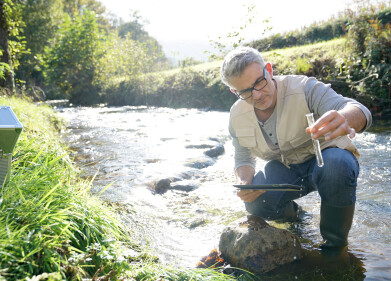Soil Testing
Grain-Size Analysis of Sediments
Sep 08 2020
The grain size distribution analysis of coastal, marine, lake sediments is a powerful tool to study the sediment contamination, the geomorphic of fluid dynamics in the natural environment, ecology of benthic communities and many others environmental related issue. Another important application of grain size analysis is beach nourishment, as the feeding sand should have the same characteristics of the original beach.
Besides, there are a lot of studies and research on the sediments size distribution that it can influences the specific surface area, physical and chemical process, water retention, aggregation degree and rheological of soil.
A few decades ago, and even still now, some scientists will use sedimentation methods such as the pipette or the hydrometer which based on Stokes Law. That is, prepare the soil and sediments in a dispersant solution, and subsequent particle sedimentation within a graduated cylinder. The diameter of the particle can be calculated by the distance and the time of fall. Due to the method is completely manual, the operator must be very skillful in order to have repeatable data, also, he or she needs to check the sample from time to time to record the distance travelled for the whole process which can be more than 24 hours.
There are several new instruments in the market for this application, but Laser Diffraction has become one of the most widely used for the particle size distribution analysis. Laser diffraction-based instrument can offer rapid analysis, the typical measurement time is less than 60 seconds, and requires very small amount of samples, which can be less than 1 gram.
Beckman Coulter LS Series, LS 13 320 XR particle size distribution analyser, composed of 2 light scattering systems: a laser beam for conventional diffraction and a polarized intensity differential scattering (PIDS), with measures particles based on the full range Mie theory from 0.01 micron up to 3,500 microns, can give you accurate volume percentage no matter they are sand, mud, clay or slit.
The high detector resolution (132 separate detector elements) of the instrument provides a reliable characterisation of individual subpopulations within wide particle size distributions that allows to address different subsystems of sediment or soil formation processes, and ultimately provides insight to environmental systems at an unprecedented level.
Learn more from our website.
Digital Edition
AET 28.4 Oct/Nov 2024
November 2024
Gas Detection - Go from lagging to leading: why investment in gas detection makes sense Air Monitoring - Swirl and vortex meters will aid green hydrogen production - Beyond the Stack: Emi...
View all digital editions
Events
Jan 12 2025 Abu Dhabi, UAE
Jan 14 2025 Abu Dhabi, UAE
Jan 20 2025 San Diego, CA, USA
Carrefour des Gestions Locales de L'eau
Jan 22 2025 Rennes, France
Safety, Health & Wellbeing LIVE
Jan 22 2025 Manchester, UK



















